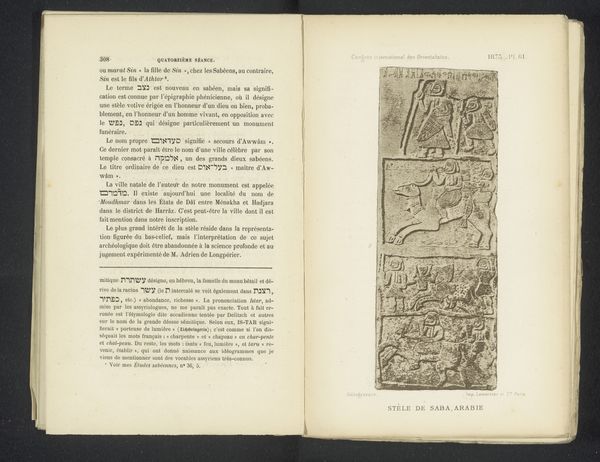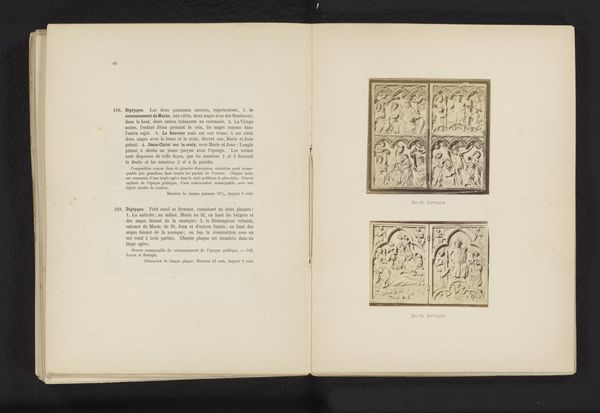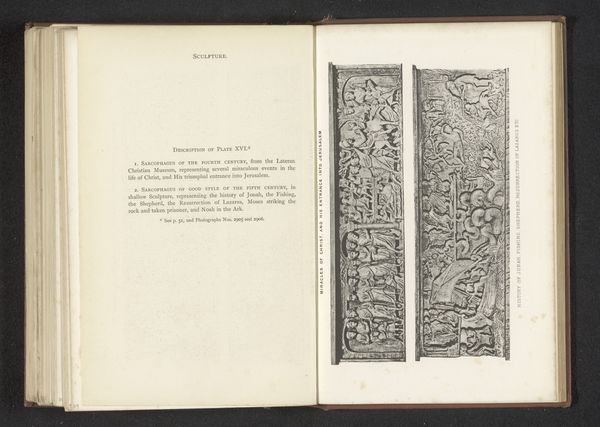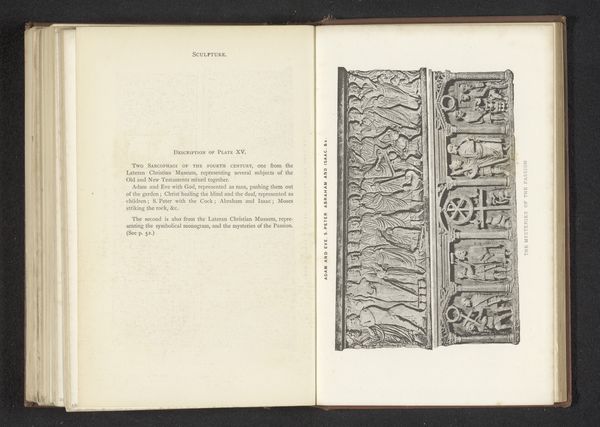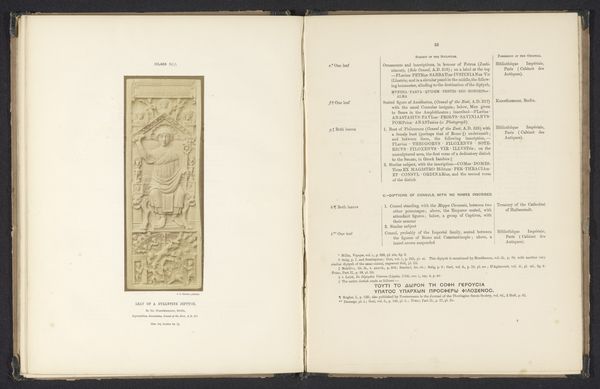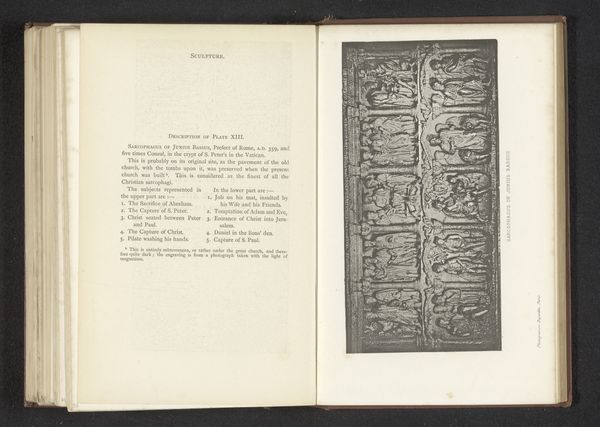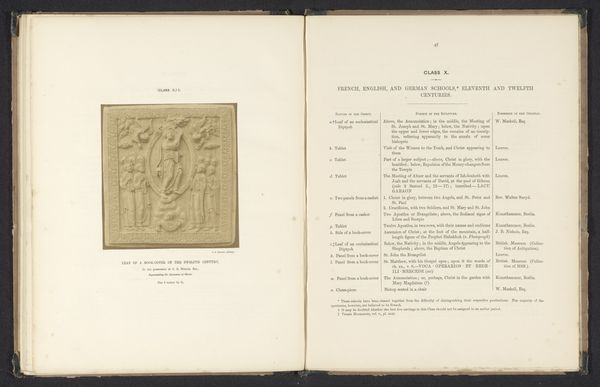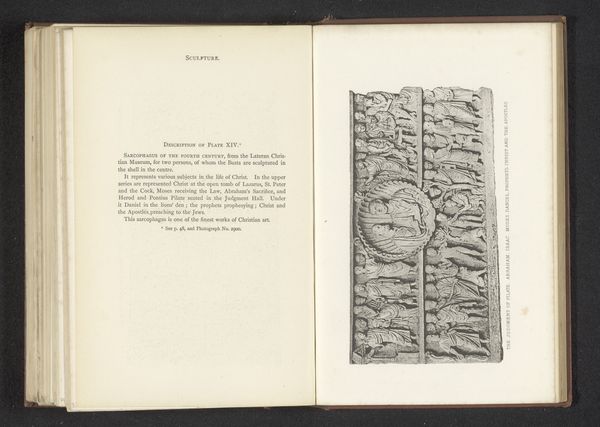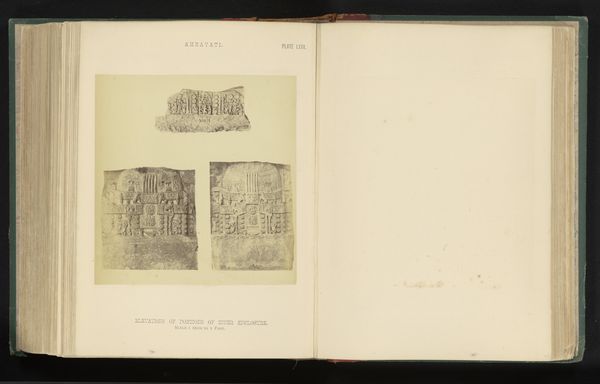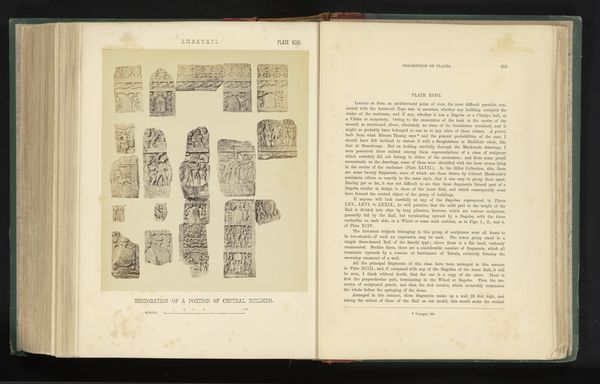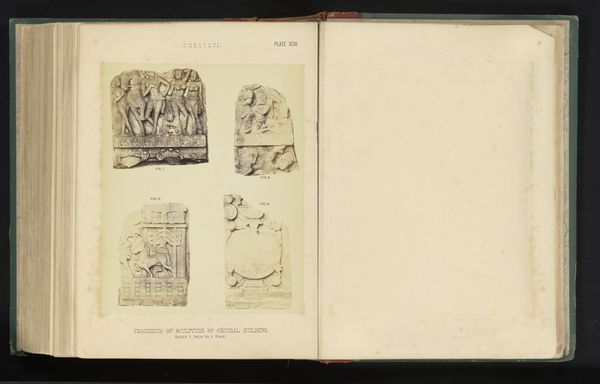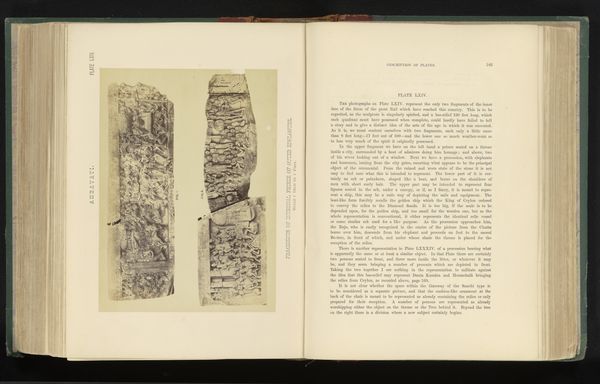
Twee reliëfs van sarcofagen, voorstellend Lazarus bij een vijgenboom en Christus en Petrus bij de haan before 1877
0:00
0:00
print, relief, sculpture, engraving
#
byzantine-art
#
medieval
# print
#
relief
#
romanesque
#
sculpture
#
history-painting
#
engraving
Dimensions: height 217 mm, width 141 mm
Copyright: Rijks Museum: Open Domain
These two reliefs of sarcophagi ends were made anonymously in the fourth century, and are now held in the Lateran Christian Museum. Their shallow carving style marks a shift from the bolder styles of earlier sarcophagi, reflecting evolving artistic preferences within the Christian community of the time. The reliefs depict scenes from the New Testament: Lazarus at a fig tree and Christ with Peter near a rooster. These images, drawing from biblical narratives, are not merely illustrative. They would have served as potent symbols of faith, redemption, and divine power for the deceased and their community. Carved during a period when Christianity was gaining prominence in the Roman Empire, these reliefs demonstrate the growing cultural influence of Christian stories and values. To fully understand these reliefs, one might research the development of early Christian art. By investigating the social, religious, and institutional factors of the 4th century, we can better understand the meaning and impact of this funerary art.
Comments
No comments
Be the first to comment and join the conversation on the ultimate creative platform.
